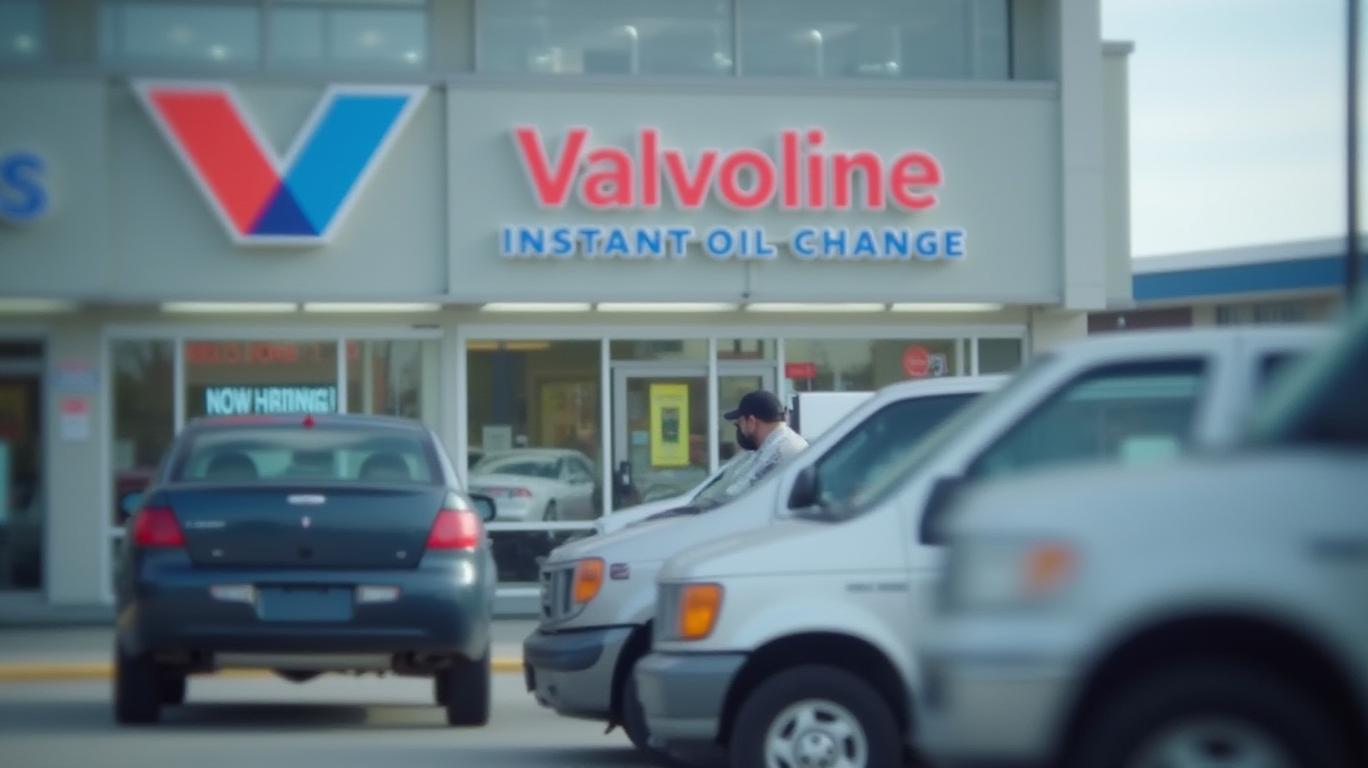Valvoline Navigates Mixed Q2 Results Amid Strategic Growth and Regulatory Hurdles
Valvoline Inc. (NYSE: VVV) reported a quarter marked by top-line growth and strategic momentum, yet tempered by declining profitability and lingering regulatory uncertainties. The company’s Q2 2025 earnings highlighted its dual focus on refranchising and expansion, even as it grapples with operational headwinds and a pending FTC review of its Breeze Autocare acquisition.

Financial Performance: Revenue Gains Offset by Profit Pressures
Valvoline’s net revenues rose 4% year-over-year to $403.2 million, driven by a 11% jump in system-wide store sales to $825.5 million. Same-store sales (SSS) grew 5.8%, reflecting strong consumer demand for its oil change and automotive services. However, reported income from continuing operations fell 12% to $38.3 million, primarily due to refranchising impacts and rising expenses. Adjusted EPS dropped 8% to $0.34, underscoring the challenges of transitioning from company-owned to franchised stores.
The stock has fluctuated between $15 and $20 since Q2 2024, reflecting investor caution amid mixed earnings trends and regulatory risks.
Strategic Momentum: Store Growth and Leadership Shifts
Valvoline added 33 net stores in Q2, bringing its total system-wide locations to 2,078—a 7.8% increase year-over-year. The company reaffirmed its 2025 target of 160–185 new stores, signaling confidence in its franchising model. Meanwhile, the appointment of Kevin Willis as CFO on May 19, 2025, marks a leadership transition aimed at stabilizing financial oversight as Valvoline navigates its acquisition plans.
The pending $1.1 billion acquisition of Breeze Autocare—a deal that would add 150 stores—remains under FTC scrutiny. A “Second Request” for additional information has delayed the closing, introducing uncertainty about Valvoline’s ability to capitalize on synergies in 2025.
Operational Challenges and Risks
- Regulatory Delays: The FTC’s review of the Breeze deal could push its completion into 2026, potentially slowing revenue diversification.
- Tariff and Cost Pressures: CEO Lori Flees noted that macroeconomic headwinds and tariffs continue to strain margins, though cost-control measures have mitigated some impacts.
- Debt Management: With $1.1 billion in debt and $62 million in cash, Valvoline’s reliance on free cash flow ($77.6 million in H1 2025) to fund operations and share repurchases ($325 million remaining under its buyback program) remains critical.
Investor Takeaways and Outlook
Valvoline’s Q2 results underscore its balancing act between growth and profitability. While store expansion and refranchising are driving top-line resilience, margin pressures and regulatory hurdles pose near-term risks. The Breeze deal, if approved, could add 10% to its store count and strengthen its position in the $100 billion automotive maintenance market.
The trend shows consistent expansion, with store numbers up 40% since 2020, reflecting the success of franchising initiatives.
Conclusion
Valvoline’s Q2 performance signals a company at a crossroads. Its execution on refranchising and store growth positions it for long-term scalability, but profitability and regulatory risks cloud the near-term outlook. Investors should weigh the strategic value of the Breeze acquisition against execution risks and macroeconomic challenges. With a differentiated business model—backed by a 4.7/5 customer satisfaction rating—Valvoline remains a key player in the fragmented automotive services sector. However, success hinges on timely FTC approval and cost discipline. For now, the stock appears caught in a holding pattern, awaiting catalysts to unlock its full potential.
Data Points to Watch:
- Q3 2025 Earnings: To assess whether profitability trends stabilize or worsen.
- FTC Decision Timeline: A key determinant of Valvoline’s 2026 growth trajectory.
- Adjusted EBITDA Growth: Non-GAAP metrics (excluding refranchising impacts) suggest 6% growth, but GAAP measures remain volatile.
In a sector ripe for consolidation, Valvoline’s future lies in its ability to execute on strategic bets while navigating regulatory and operational headwinds—a tightrope walk that will define investor confidence in the quarters ahead.

Comments
No comments yet